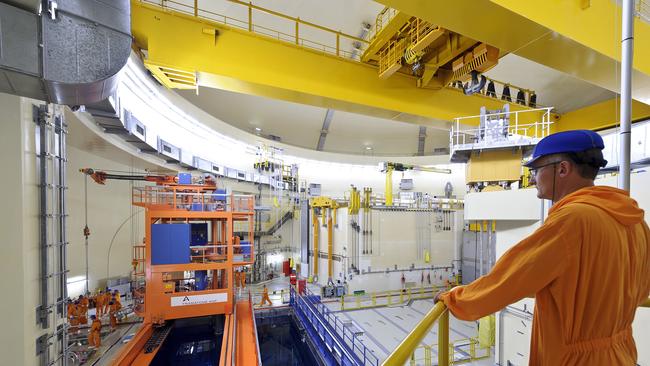A nuclear over-reaction
The nuclear inquiry announced by the government is an important first step towards a mature and overdue conversation.

The nuclear inquiry announced by the Morrison government is an important first step towards the mature and overdue conversation Australia needs to have about nuclear power.
It’s a sad reflection on the anti-nuclear movement that over the past four decades this debate has been blighted by scare campaigns and exaggeration.
Whether focused on old technologies or nuclear proliferation, the scare campaign against nuclear energy might have been effective but rarely based on the truth.
Yet times are changing. So let’s respect the intelligence of the Australian public by putting a few basic facts on the table about nuclear power.
It continues to be the safest form of power generation. A study by the Lancet Medical Journal in 2007 concluded that nuclear energy, in terms of deaths of workers, is the safest way of generating power.
Fukushima did nothing to change that.
While tragically almost 16,000 deaths were attributable to the largest earthquake ever to hit Japan and the following tsunami, there were no deaths from radiation exposure in the immediate aftermath of the incident.
Nuclear is also the only non-hydro power generation source capable of producing zero-emission power 24/7, which is the type of electricity needed by all modern economies.
Nuclear energy is safe, reliable and affordable. This is the inconvenient but fundamental truth which is ignored by those arguing against nuclear power.
The anti-nuclear movement is not only anti-science — the modern equivalent of the infamous Flat Earth Society — it also specialises in the worst sort of climate denialism.
Australia has not had to consider nuclear energy seriously to date because of our coal and gas reserves. This is why it was so easy to slap a ban on nuclear power 20 years ago as part of a late-night deal to get legislation through the Senate.
The MCA has consistently argued that that ban needs to be lifted. But we also recognise the political reality that bipartisanship is required.
That’s why the global discussion on nuclear power is a good model for our own discussion on nuclear power, supported by the sensible decision by the Morrison government to hold an inquiry.
As the Intergovernmental Panel on Climate Change acknowledged last October, under almost all scenarios where climate change impacts are limited to below two degrees, global nuclear power generation would have to increase by up to 100 per cent by 2030 and up to 500 per cent by 2050.
Even Bloomberg New Energy Finance — a renewable energy advocacy organisation — has called for a serious look at nuclear energy, with BNEF founder Michael Liebreich acknowledging renewable energy alone could not meet the energy demands of a power-hungry world while also reducing emissions.
He pointed out that just one modern nuclear power plant in Germany produced 83 per cent of all the power generated by Denmark’s 6100 wind turbines.
To put that into an Australian context, one nuclear power station in Germany produced around 80 per cent of all the power from wind turbines in our own National Electricity Market in 2018.
US environmentalist and nuclear advocate Michael Shellenberger notes that electricity costs in France (which gets 70 per cent of its electricity from nuclear) is around half that of its neighbour Germany.
At the same time, average power sector emissions in Germany are 10 times higher than those in France. So because of its nuclear power generators, France has cheaper and cleaner energy than Germany.
There is no doubt that nuclear power has to stack up commercially.
And while there have been delays and cost over-runs recently in the UK, Finland and the US, these are because these countries have had to restart their nuclear power generation sector with no new builds for more than 20 years.
It also reflects the challenges of building large-scale plants that require custom designs.
Yet the bigger picture shows that there is a nuclear building boom at present around the globe, with 55 plants under construction and a further 440 planned or proposed.
The combined output of those power stations is more than double the total production of Australia’s National Electricity Market.
One of the most exciting developments in nuclear power generation is Small Modular Reactors.
These offer simpler, cheaper construction, better safety performance and lower costs.
That’s why private sector investors like Bill Gates are helping fund US-based companies like NuScale and Terrestrial Energy to build smaller cost-effective nuclear generation units.
Australian businesses and households face the unenviable combination of an ageing baseload coal fleet, some of the most expensive energy costs in the developed world, and the practical and cost challenges of integrating large amounts of renewables into the grid.
When the rest of the world is deploying the cheapest zero-emission 24/7 energy source, Australia should readily embrace an energy future which is good for both national progress and the environment.
Tania Constable is the chief executive officer of the Minerals Council of Australia.

